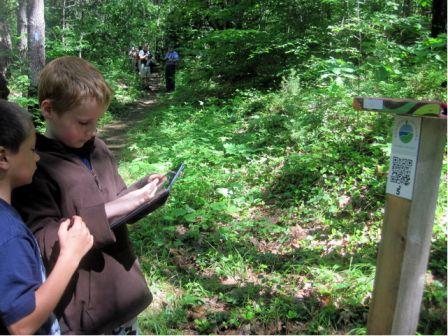 For me, getting kids outside and excited about nature is paramount. Yet today’s generation of children is consumed with technology. So, why not bring technology outside?
For me, getting kids outside and excited about nature is paramount. Yet today’s generation of children is consumed with technology. So, why not bring technology outside?
Technology is an entry tool that can make learning about the natural world exciting and fun. It keeps students engaged, and it has the capacity to satisfy a child’s curiosity instantly.
Many people have smart phones and take them everywhere. Teachers can take advantage of this technology – their ease of use and the tremendous amount of information they can provide very quickly – to engage students in learning.
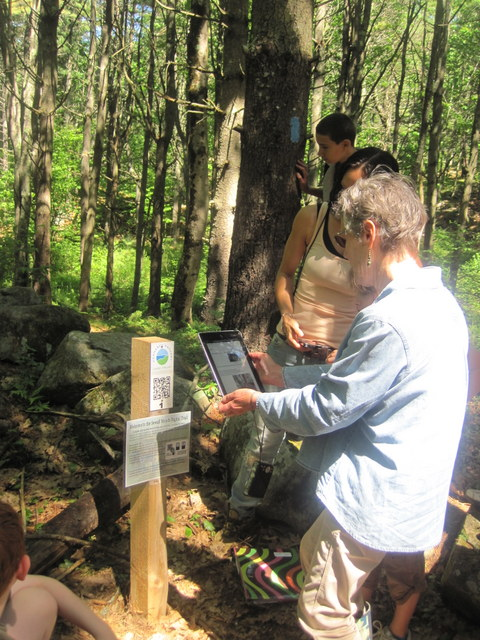 Recently I designed a class project that incorporated smartphone technology and encouraged collaboration between older and younger students at two nearby schools.
Recently I designed a class project that incorporated smartphone technology and encouraged collaboration between older and younger students at two nearby schools.
The Sewall Woods Digital Trail
We named our GreenWorks! project The Sewall Woods Digital Trail. The project incorporated learning about the natural history of a local forest, an authentic purpose for writing, and technology. The Kennebec Estuary Land Trust (KELT) was an important partner in this initiative.
My third grade class and seventh grade students from a nearby school worked together for this project. One of the main projects was creating signage along a beloved nature trail in Bath, Maine.
The section of Sewall Woods that we focused on is part of a popular five-mile-long trail that winds its way through Bath. The students created a digital interpretative guide—the first of its kind in the region!—that can be accessed online or on the trail by QR (Quick Response) technology, activated by smart-mobile phones.
Throughout the project the students worked together in groups, connecting and interacting with each other and their environment.
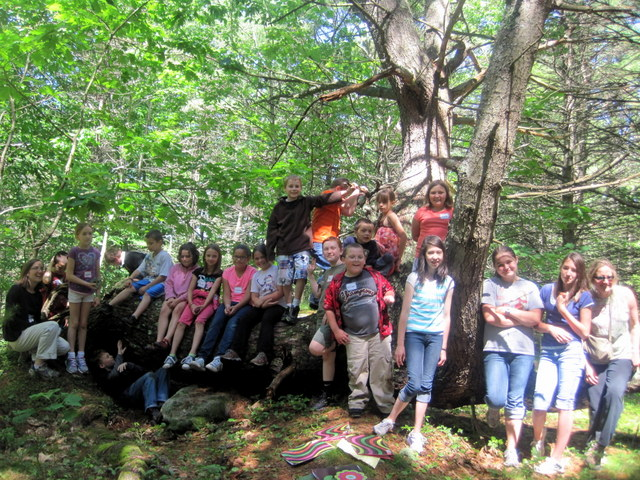 The Process
The Process
During the 2011–2012 school year, the students traveled to the Sewall Woods property on four occasions. They recorded observations at eight interpretive spots on the trail.
Since the third grade science curriculum focuses on the forest community, the information at each stop emphasizes interesting trees and forest features. Much of the students’ knowledge about trees was obtained through classroom lessons from PLT resources (see below for the activities we used).
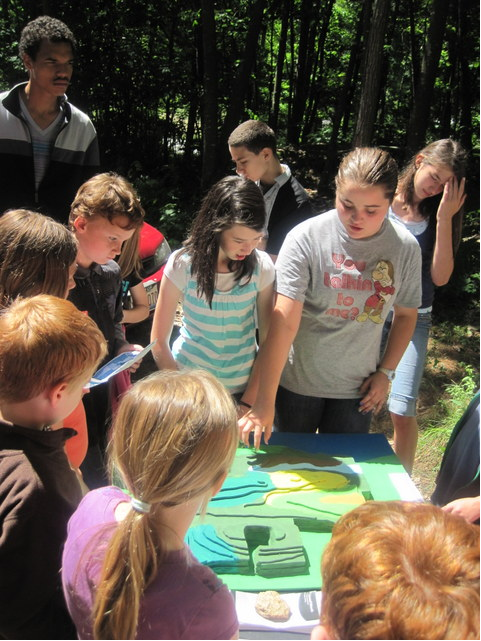 Small groups of students were assigned to a location along the trail, where they collected their observations in a special binder. They determined what they thought was important for a visitor to notice at each location. They continued to research their topics with assistance from the seventh graders and members of the Land Trust. They summarized their research and wrote brief interpretative messages to be posted on a web page.
Small groups of students were assigned to a location along the trail, where they collected their observations in a special binder. They determined what they thought was important for a visitor to notice at each location. They continued to research their topics with assistance from the seventh graders and members of the Land Trust. They summarized their research and wrote brief interpretative messages to be posted on a web page.
The QR code is the link between the sign along the trail and the website. When a QR code is scanned using a smart phone, it takes the user to a specific website. Our QR codes direct participants to pages connected to the school’s and the KELT’s websites. (Note that many free online sites generate QR codes in a matter of seconds—you key in a URL and a QR image is created that you can then use on signs, brochures, or anyplace else you would like.)
PLT’s GreenWorks! grant was used in part to lease the technology for a few months. In addition to having devices on hand for the students to try out during development, parents and community members tested the QR codes during a trail opening celebration in June.
The grant also helped fund the signs and field supplies. On opening day, visitors walked to the eight different interpretive signs to scan the QR codes, and students were at each spot ready to answer questions and share research.
PLT Tie-Ins
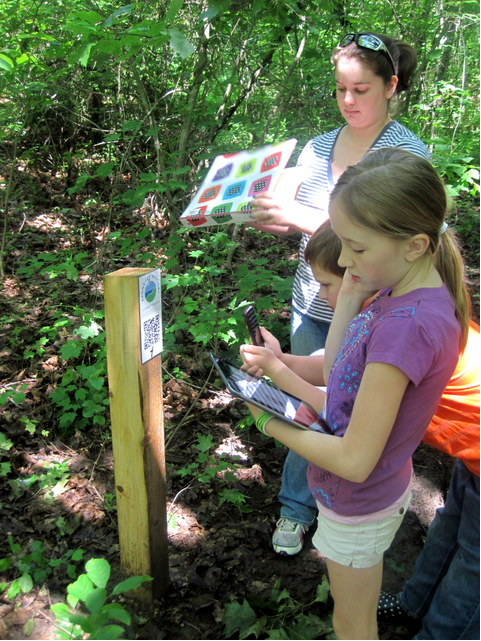
I used these activities from PLT’s PreK-8 guide that fit with what we were trying to accomplish:
Introductory Period
#87 Earth Manners
#61 The Closer You Look
#68 Name That Tree
#21 Adopt a Tree
Fall Lessons
#64 Looking at Leaves
#78 Signs of Fall
#22 Trees as Habitats
Spring Lessons
#22 Trees as Habitats
(we revisited this lesson in a different season)
#23 The Fallen Log
#65 Bursting Buds
#30 Three Cheers for Trees!
#27 Every Tree for Itself
#32 A Forest of Many Uses
Lessons from our Project
The students learned a lot about the natural environment around them throughout this project. They also learned how to teach others and participated in a project that brought their knowledge to their community. Here are some suggestions – five powerful learning tools – that I would like to pass on to other educators:
- Technology, in this case QR codes, create more interest and accessibility to the trail or ecological concept.
- Using a local natural area encourages students to appreciate a natural gem in their own “backyard.”
- Older students are inspiring role models to younger students.
- Selecting PLT lessons that connect with objectives enriched the learning experience.
- Collaboration, in our case between the local land trust and different age students, is a powerful learning tool.


